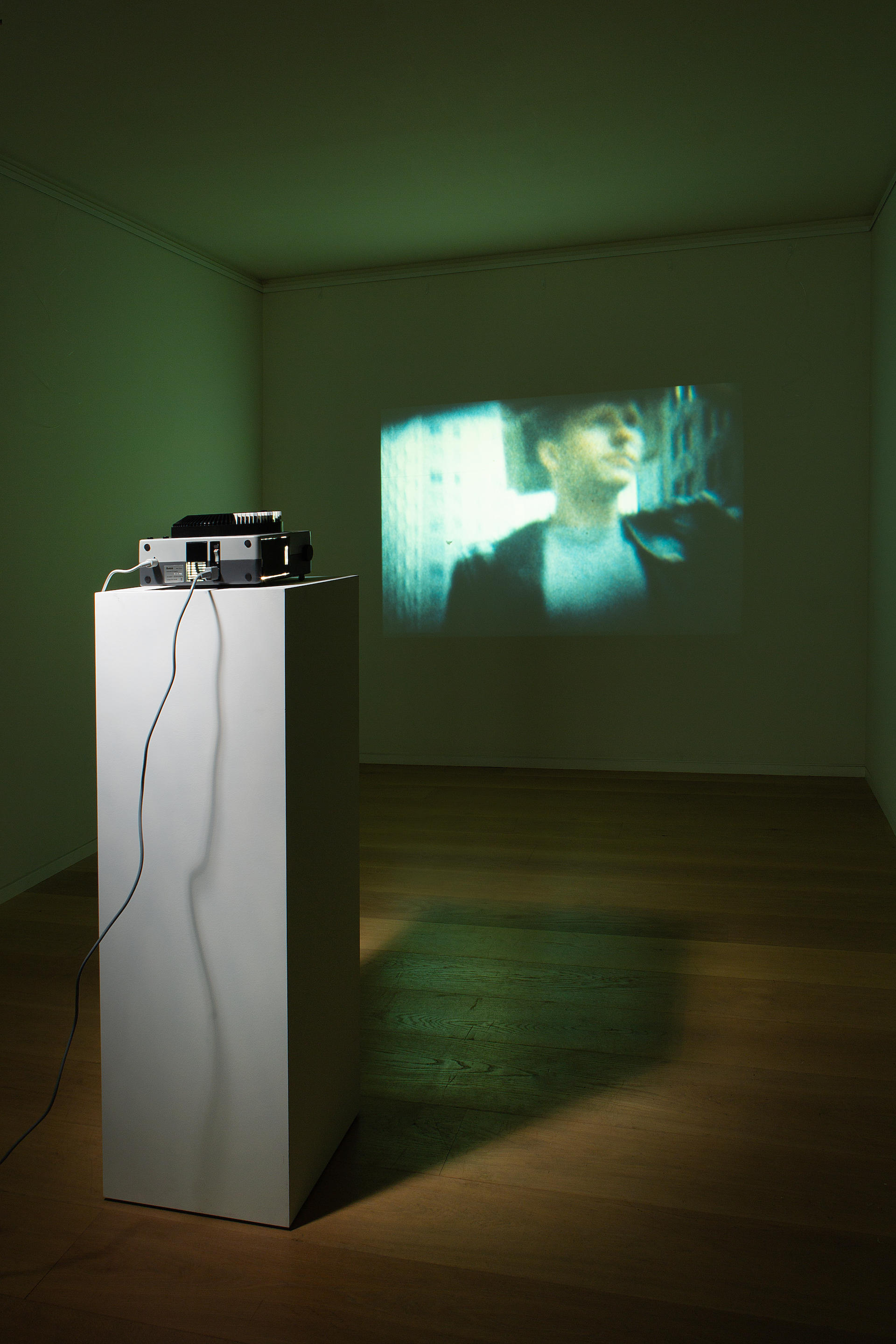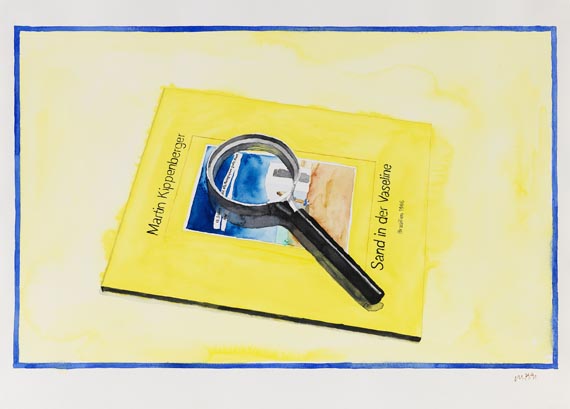Martin Kippenberger Sechs 1996 colored pencil, ink on paper 11 5/8 x 8 1/4 in. (29.5 x 21 cm) Initialed and dated "M.K. 96" lower right.
Provenance Private Collection Catalogue Essay “My style is where you see the individual and where a personality is communicated through actions, decisions, single objects and facts, where the whole draws together to form a history.” Martin Kippenberger In the last decade of Martin Kippenberger’s life he produced perhaps his most famous series of works on paper. Entitled the “hotel drawings,” these works were executed upon hotel stationary that the artist had accumulated throughout his travels. The series documented the artist’s nomadic lifestyle; the unique drawings reveal Kippenberger’s quicksilver ability to delineate his unrestrained, powerful motifs. The present lot, executed upon stationary from “Mike’s Marble Resort,” is entitled Sechs and is dated 1996. The work shows a number of fried eggs, flattened upon a colorfully tiled grid of salmon pinks and egg yolk yellow rectangles. In large black scrawl, the German word “SECHS” floats in the center of the composition. “SECHS,” at first glance means “six “in German, while when spoken in English it is heard as “sex.” As a visual strategy, Kippenberger often embraces German words that hold double meanings in order to infuse his works with sardonic humor and to create a dynamic interrelationship between text and image. The egg throughout art and religious history has symbolized rebirth, creation and fertility. Here those hallowed associations are demoted or at least transformed into a more prosaic set of meanings. The fried egg may connote both the promise and aftermath of the act of “sechs” itself. By linking text and image in both a harmonious and disparate manner, Kippenberger has been described as holding no subject as sacred. (A. Goldstein, 'The Problem Perspective', in: Martin Kippenberger The Problem Perspective, exh. cat., The Museum of Contemporary Art, Los Angeles 2008, p. 39) Simultaneously, Kippenberger has successfully “appropriated numerous motifs and figures as his signs….They all came to be recognized as his self-willed companions, as figures in the ensemble of his thought.” (R. Ohrt, Kippenberger Paintings, exh. cat, Museo Nacional Centro de Arte Reina Sofia, Cologne, 2004, p. 40) Read More
Martin Kippenberger Sechs 1996 colored pencil, ink on paper 11 5/8 x 8 1/4 in. (29.5 x 21 cm) Initialed and dated "M.K. 96" lower right.
Provenance Private Collection Catalogue Essay “My style is where you see the individual and where a personality is communicated through actions, decisions, single objects and facts, where the whole draws together to form a history.” Martin Kippenberger In the last decade of Martin Kippenberger’s life he produced perhaps his most famous series of works on paper. Entitled the “hotel drawings,” these works were executed upon hotel stationary that the artist had accumulated throughout his travels. The series documented the artist’s nomadic lifestyle; the unique drawings reveal Kippenberger’s quicksilver ability to delineate his unrestrained, powerful motifs. The present lot, executed upon stationary from “Mike’s Marble Resort,” is entitled Sechs and is dated 1996. The work shows a number of fried eggs, flattened upon a colorfully tiled grid of salmon pinks and egg yolk yellow rectangles. In large black scrawl, the German word “SECHS” floats in the center of the composition. “SECHS,” at first glance means “six “in German, while when spoken in English it is heard as “sex.” As a visual strategy, Kippenberger often embraces German words that hold double meanings in order to infuse his works with sardonic humor and to create a dynamic interrelationship between text and image. The egg throughout art and religious history has symbolized rebirth, creation and fertility. Here those hallowed associations are demoted or at least transformed into a more prosaic set of meanings. The fried egg may connote both the promise and aftermath of the act of “sechs” itself. By linking text and image in both a harmonious and disparate manner, Kippenberger has been described as holding no subject as sacred. (A. Goldstein, 'The Problem Perspective', in: Martin Kippenberger The Problem Perspective, exh. cat., The Museum of Contemporary Art, Los Angeles 2008, p. 39) Simultaneously, Kippenberger has successfully “appropriated numerous motifs and figures as his signs….They all came to be recognized as his self-willed companions, as figures in the ensemble of his thought.” (R. Ohrt, Kippenberger Paintings, exh. cat, Museo Nacional Centro de Arte Reina Sofia, Cologne, 2004, p. 40) Read More









.jpg)



Try LotSearch and its premium features for 7 days - without any costs!
Be notified automatically about new items in upcoming auctions.
Create an alert